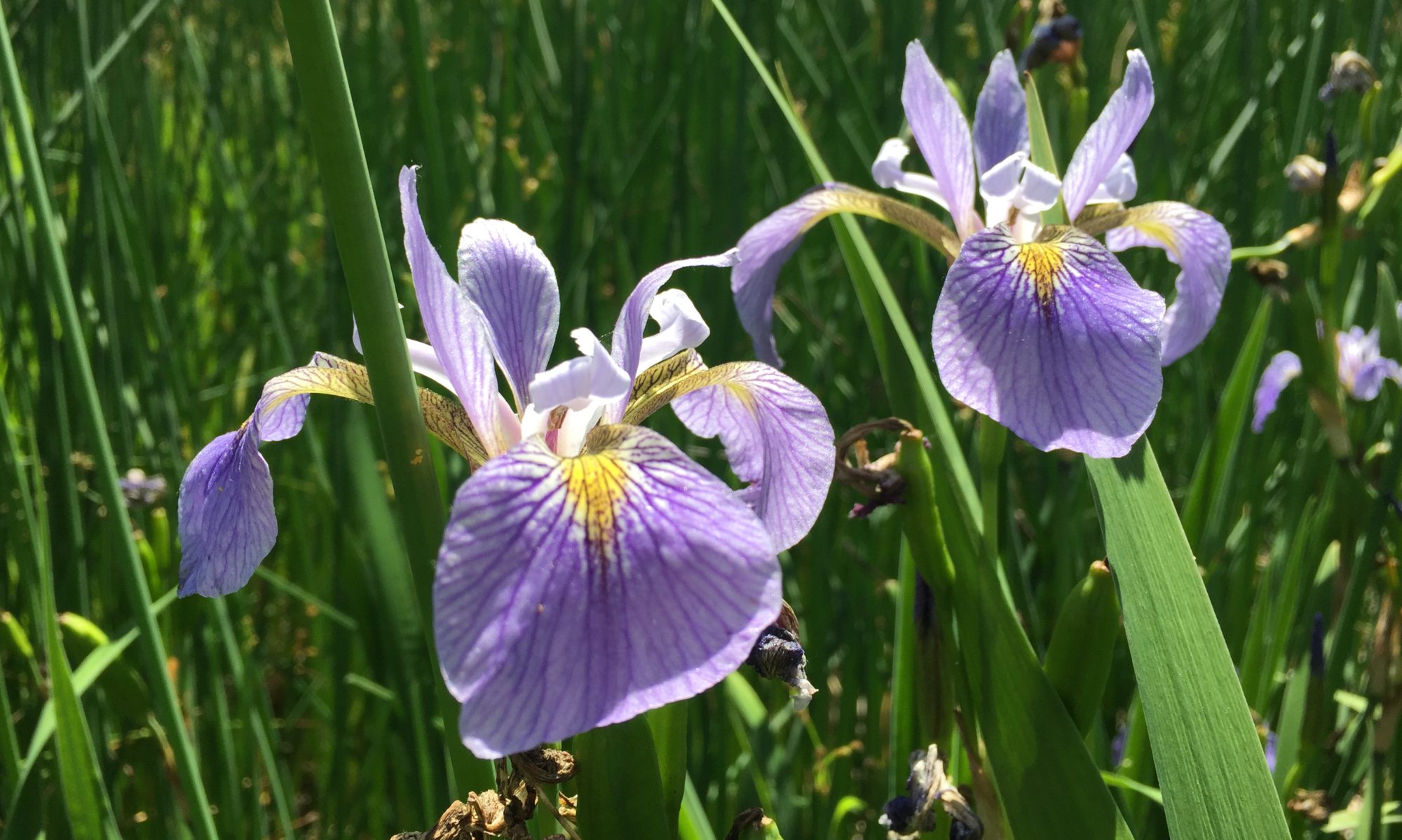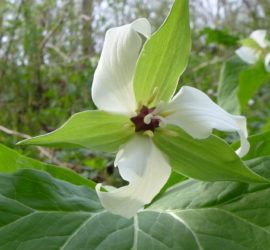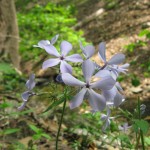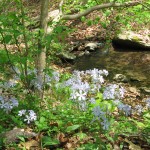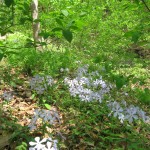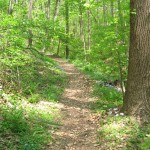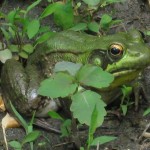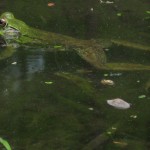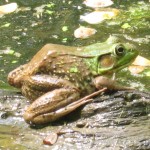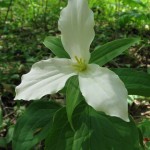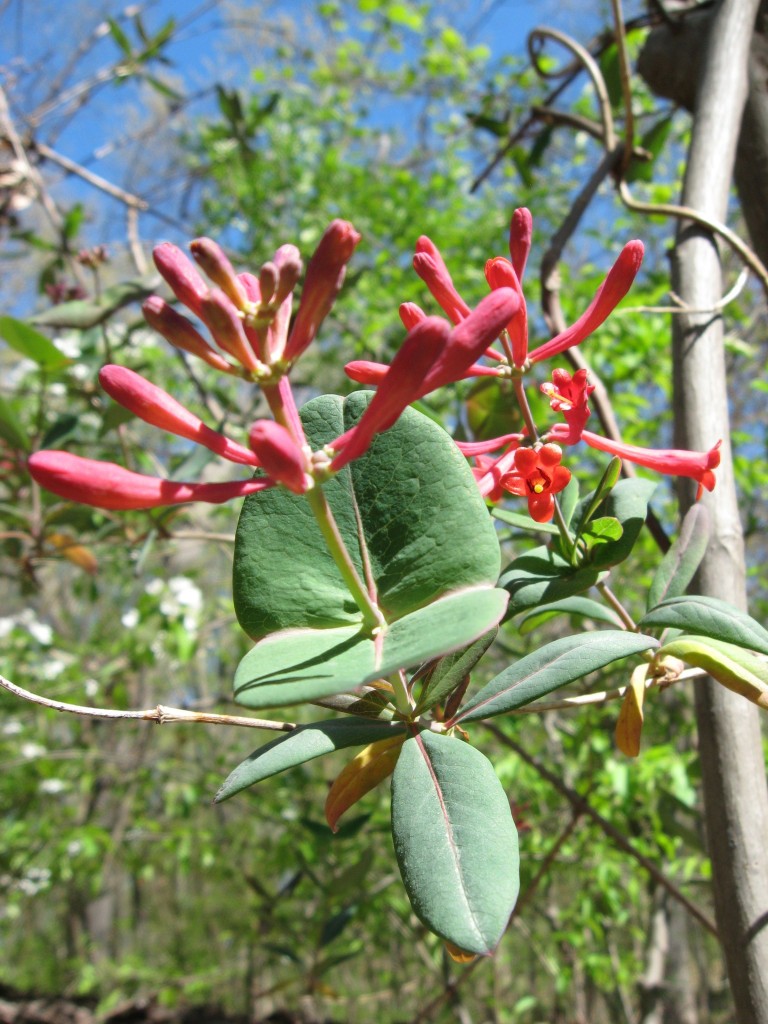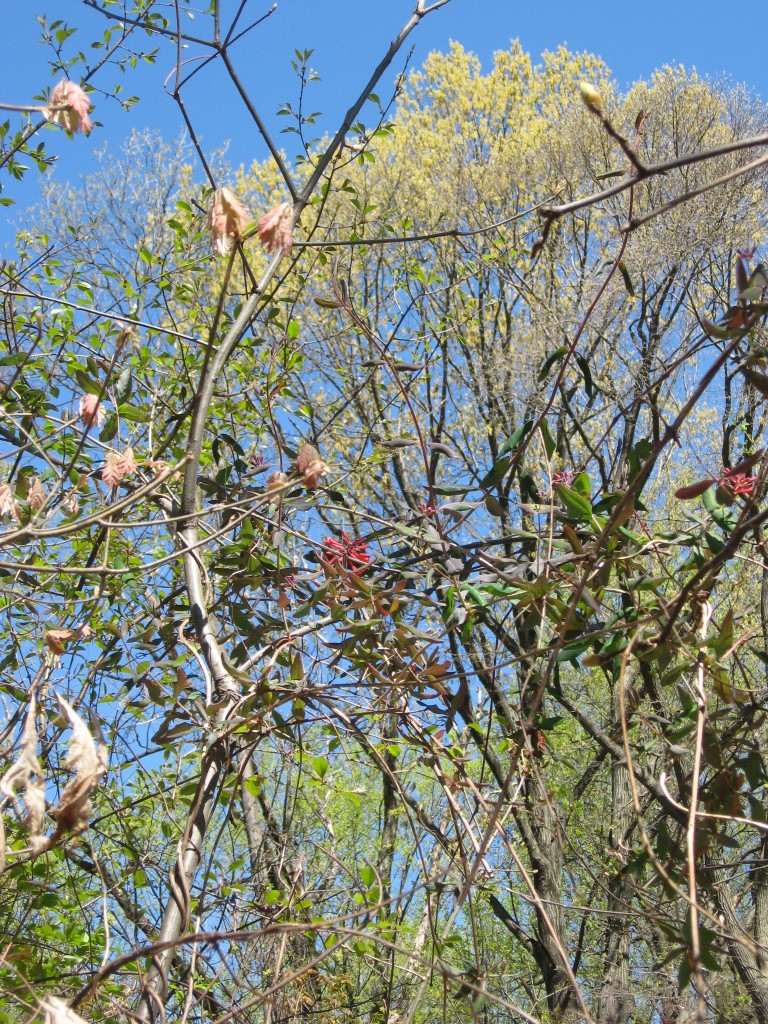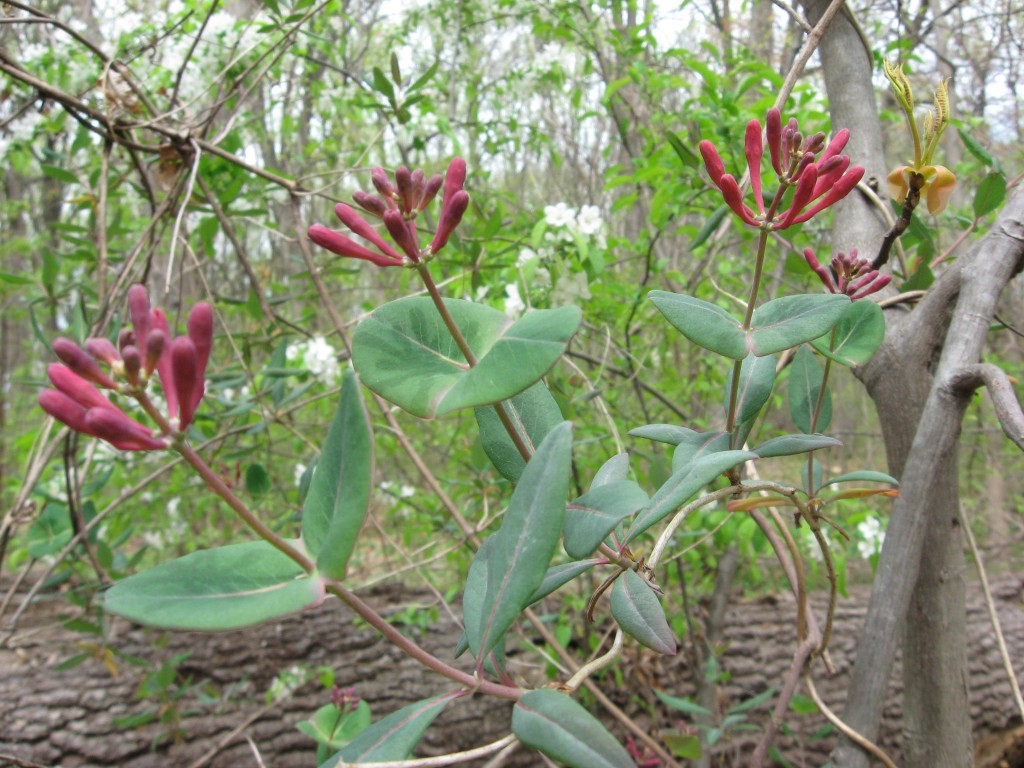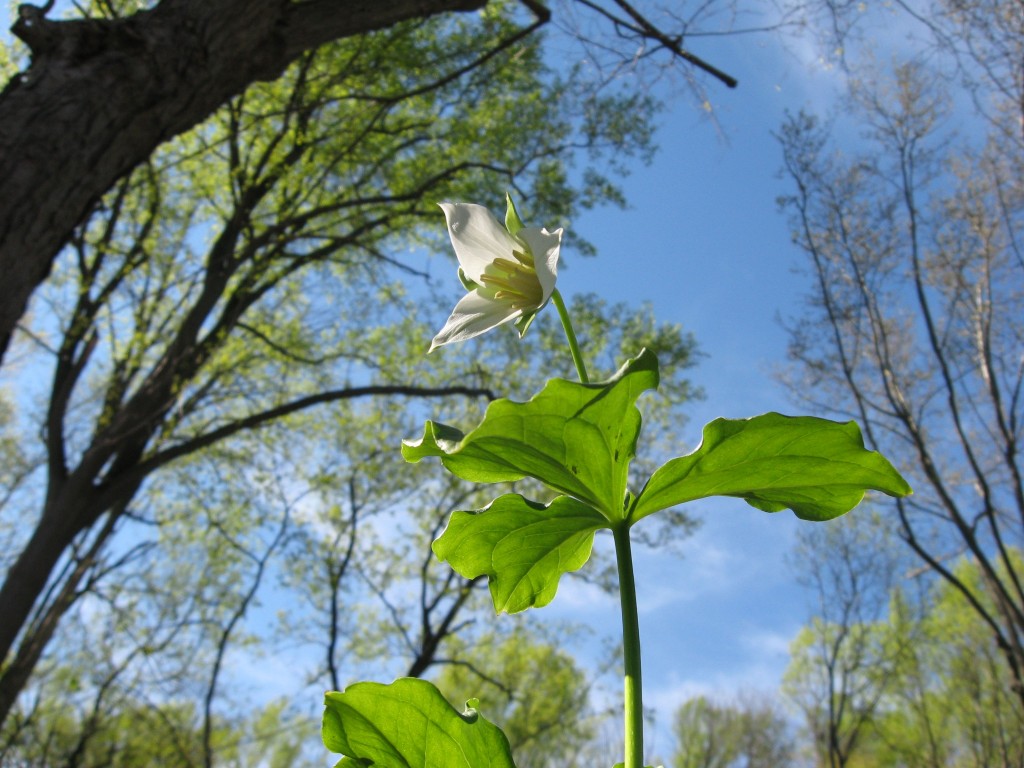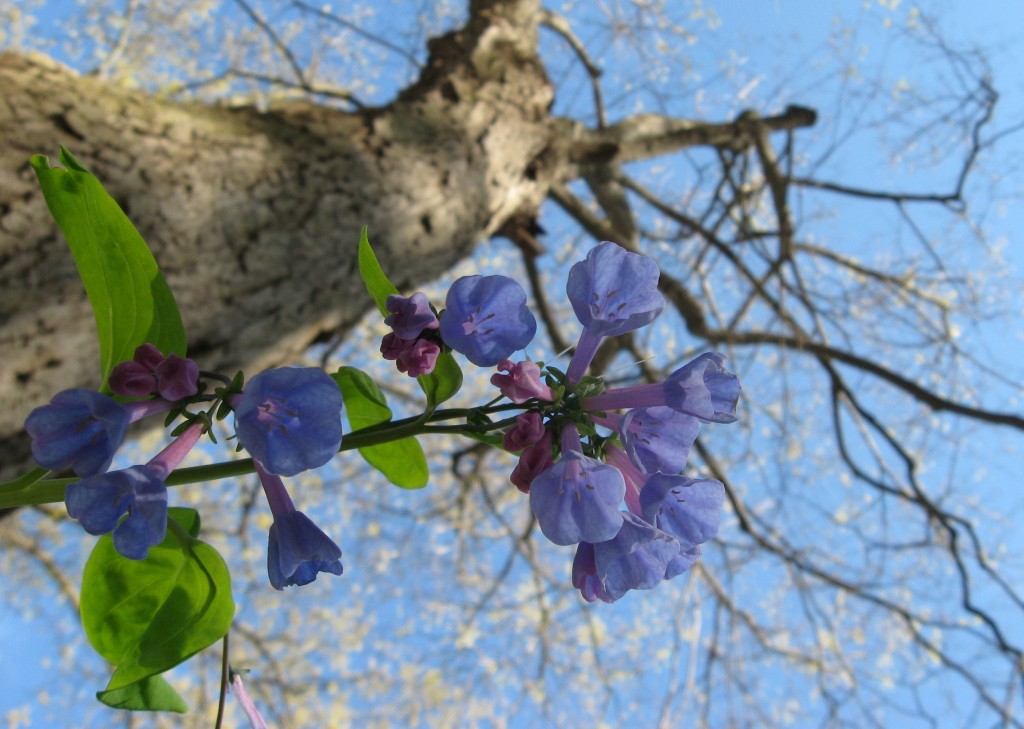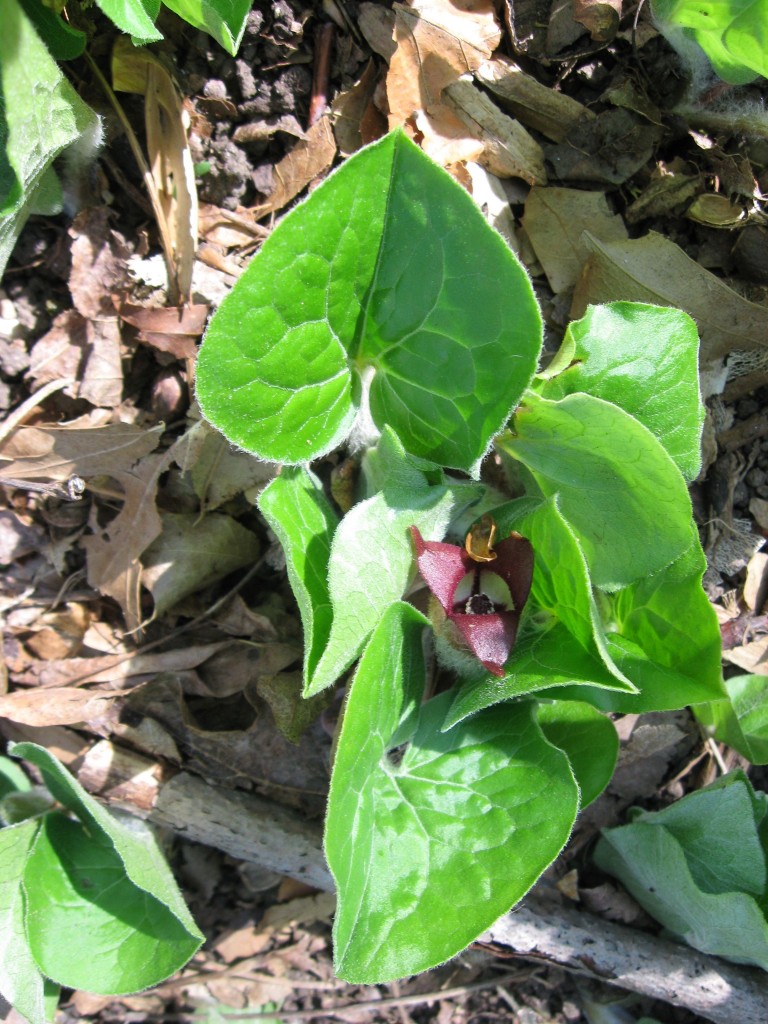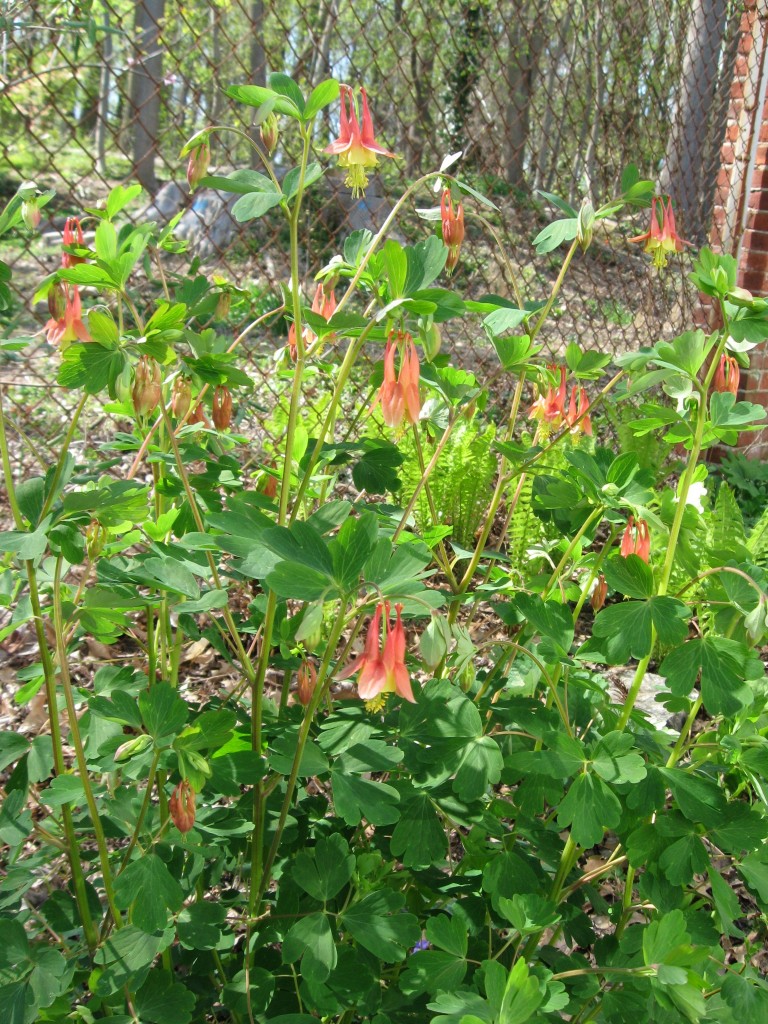THE SANGUINE ROOT VISITS THE SCHUYLKILL CENTER FOR ENVRONMENTAL EDUCATION

We sat down on the narrow trail to admire the Phlox and the bluebells in the early afternoon sunlight. Up the south facing hill we could see Trillium grandiflorum , Spring Beauty and Mayapple blooming away, their white and pink flowers glowing in the precious spring light. The Beech, Oak, Sycamore and Maples had not fully leafed out yet, creating a magnificent filtered light, a bathing light, a light the flowers soaked up, ripening their delicate petals until they filled to maturity until the last hour of total vibrance, the height of their full bloom.
To see these flowers at their peak is to see Spring, our recognition of this moment is our initiation into the rite of our personal passage into the season, with each flower we perceive, our sense of spring is that much more matured, we appreciate Spring and we begin to understand it . Â Once we have reached the awareness of Spring and its splendid beauty, it is ever so easy to see the decline: even the slightest wilt of the flowers is ours to behold, The Trilliums get an edge of brown around the edges, the bluebells lose their bluest of flowers to the sky ultimately, and we are left with our desire to see the newest and freshest bloom.
Spring is tulmultuous. Even seeing flowers we never got to see bloom withering away is unsettling; we were not there, Spring is moving too fast-its as if our own aspirations become tied to the blooms-What if we will never experience the true Spring, the Spring of all the flowers, the one Spring that will give us all that we need to be completely connected to the spring.
Spring will do that to us- an awakening that is vigorous and fresh, yet so full of uncertainties. There is something to be said for a Spring break.
Stop and see the flowers!
Your moment to become part of Spring is when you see the blooms and feel the air and recognize that a new time is here.
We were pleased to see that the invasive Garlic mustard had been removed from the area. Â Last year it was a disturbing presence among the trilliums and the bluebells. We found out that the 3rd saturday of every month is an invasive removal workday! What a great way to be a part of spring; volunteer your time doing environmental restoration in your local natural area! Now that the Garlic mustard has been removed for this year, the acorns can germinate, and the Beeches, Oaks, Maples and Sycamores can become the seedlings for the next generation of forest. This will be the forest that will maintain the biodiversity we have seen today. Â With all of the invasive species problems in the world today, the forests need us to come out and give a hand. Â It was truly heart-warming for us to see that the schuylkill environmental education center is making a concerted effort to restore their magnificent forest. We had a magical walk through the enchanting Ravine loop, and we would love to come out one day when we can and volunteer and to tell our own story of Morris Park.
